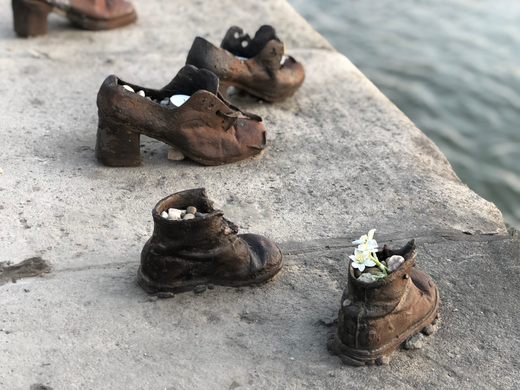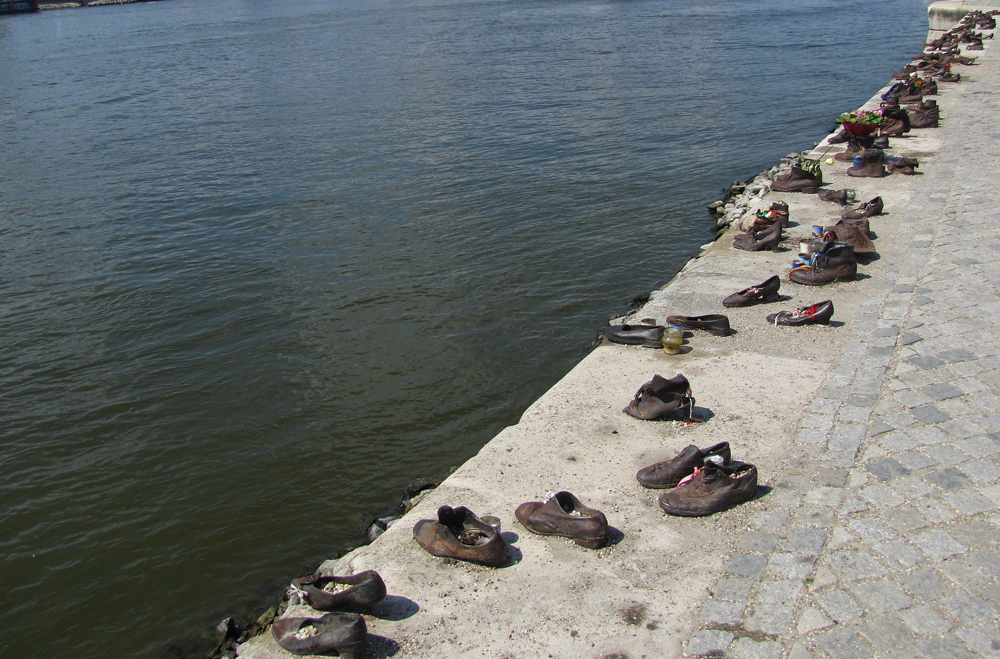Introduction

In 2005, a thought-provoking artwork titled ‘The Shoes on the Danube Bank’ appeared on the banks of the Danube River in Budapest, Hungary. This sculpture was co created by artists Can Togay and Gyula Pauer, aiming to commemorate the historical event in which hundreds of Hungarians were ordered to leave their shoes on the riverbank and then shot during the Holocaust. This article will delve into the history, significance, and important information conveyed by this sculpture today.
Creative background
In order to fully understand the significance of ‘Shoes on the banks of the Danube’, we first need to review Hungary’s history during World War II. In 1944, Nazi Germany occupied Hungary and established a military regime to defend the country. During this period, thousands of Hungarian Jews suffered cruel persecution, including evictions, concentration camps, and massacres. One of the heinous incidents was when Jews were ordered to take off their shoes on the banks of the Danube River, then shot dead, and their bodies washed into the river, making them unrecognizable. This is a scene in the Holocaust and one of the darkest moments in human history.
Artists and creations

In order to forever remember this painful historical event, artists Kan Togai and Jaoula Paoul teamed up to create ‘Shoes on the banks of the Danube’. They chose shoes as a symbol of remembrance because they represent the existence of persecuted people and are also their last moments. These shoes not only represent the end of life, but also carry the suffering and memories of a nation.
The Shoes on the Danube Bank are made of iron and accurately imitate shoes of various styles and eras. This is to emphasize that these victims come from different ages, social backgrounds, and life experiences, but they were all subjected to the same cruel treatment during the Holocaust. These iron shoes are arranged in two rows, as if their owners are quietly standing on the banks of the Danube River, waiting for inevitable fate.
Symbolism and Reflection
The shoe on the banks of the Danube is a strong symbolic work that represents the disappearance of innocent lives and condemnation of Nazi atrocities. This sculpture aims to evoke emotional resonance among the audience and enable them to reflect on the horror crimes in human history. Each pair of shoes represents a family and a life, and their silence cries out ‘Don’t forget’.

The banks of the Danube River where the sculpture is located also have symbolic significance. The Danube River is one of the most important rivers in Central Europe, flowing through multiple countries and symbolizing the common historical and cultural heritage of humanity. At this historic location, sculpture reminds us that we must remember the past to avoid a repetition of history.
Audience response
Since 2005, ‘Shoes on the banks of the Danube’ has attracted a large number of tourists and viewers. People come here not only to appreciate a piece of art, but also to express respect and condolences to the victims of the Holocaust. This sculpture has become a collective memory, a warning to history, and a firm commitment to humanitarian values.

The significance of the future
The Shoes on the Danube Bank still have profound significance today. It reminds us that the injustices and evils of history should never be forgotten, and it is the responsibility of each of us to ensure that such evils do not occur again. This sculpture also encourages people to be more tolerant and understanding towards people of different backgrounds and beliefs, in order to avoid committing similar crimes.
Epilogue
The Shoes on the Danube Bank is a painful and profound commemoration that, through artistic means, brings people back to a moment full of suffering and struggle. This sculpture educates the audience, allowing them to reflect on past mistakes and strive to ensure future peace and justice.

